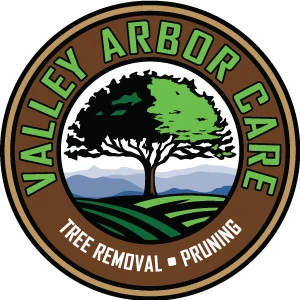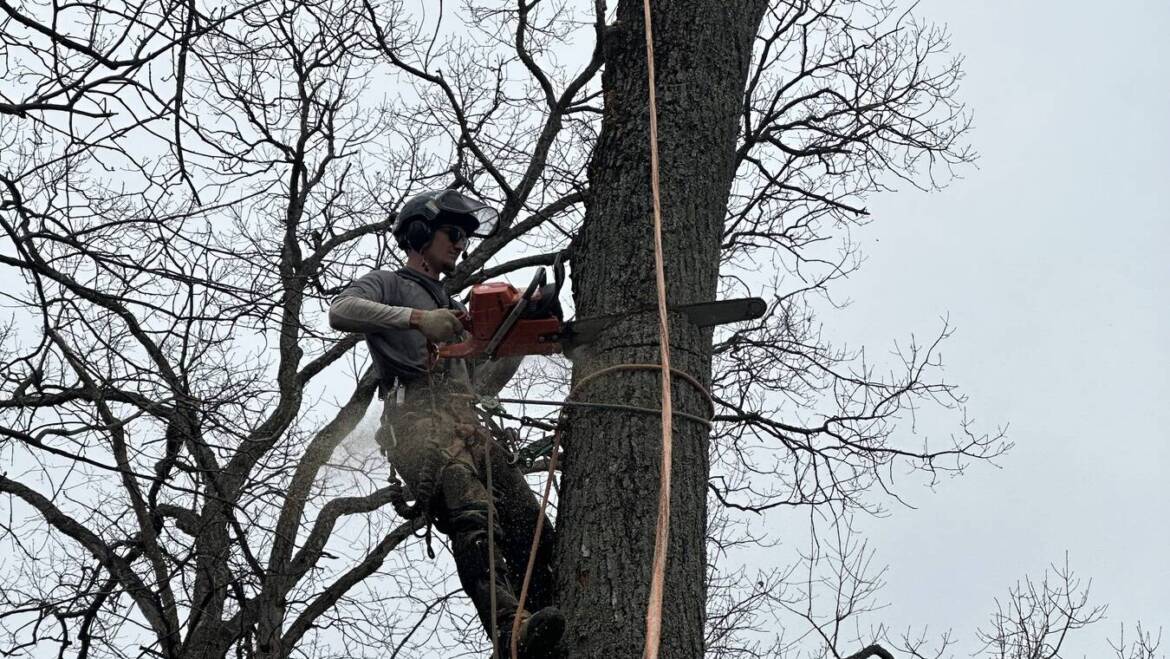Trees play a vital role in our environment, providing shade, beauty, and homes for wildlife. The problem is that trees can suffer from various problems that may lead to death. Knowing how to identify if a tree is dead or dying is crucial for maintaining a safe and healthy landscape.
This guide from the tree trim service experts from Valley Arbor Care will help you understand the signs of tree distress and offer tips for saving struggling trees.
Symptoms of a Dying Tree
A tree rarely dies overnight. The process of decline often takes months or even years, with various warning signs along the way.
- Leaf Problems: One of the first signs of trouble is when the leaves change color outside of the normal seasonal cycle. In spring and summer, the leaves should be green and healthy. If they are yellowing, browning, or falling prematurely, it could indicate stress.
- Cracks in the Trunk: Large cracks or splits in the trunk are another warning sign that the tree may be weakening.
- Fungal Growth: The presence of mushrooms or other fungi at the base of a tree often signals internal decay. Fungi feed on dead or decaying wood, meaning the tree may already be compromised.
- Dead Branches: Brittle, dead branches that break off easily can indicate that the tree is struggling to sustain itself. If many branches are dead, it may be a sign of severe stress.
How to Identify a Dead Tree
Sometimes a tree looks dead but is actually dormant or struggling with temporary issues like drought.
- Scratch Test: Gently scratch the bark with your fingernail or a knife. If the underlying layer is green and moist, the tree is alive. If it’s dry and brown, the tree is likely dead or dying.
- No Leaf Growth: If a tree fails to produce leaves or new buds during its growing season, this is a strong indicator that it may be dead. Check for leaf growth on various parts of the tree, not just on a single branch.
- Examine the Roots: Exposed or damaged roots can be another clue. If the roots appear rotted, it can be a sign that the tree has lost its ability to draw nutrients from the soil.
How to Tell if a Tree is Dying
A dying tree may still show some signs of life, but it will likely appear weak or in poor condition.
- Wilting or Discolored Leaves: If the leaves are not vibrant or are wilting, this suggests that the tree is not getting the proper nutrients.
- Peeling Bark: Healthy bark should be intact. If you notice large patches peeling off, the tree may be dying.
- Pest Infestation: An increase in pests such as termites or beetles can mean the tree is already decaying and attracting unwanted insects.
How to Save a Dying Tree
While a fully dead tree cannot be revived, a tree in distress can often be saved if action is taken early.
- Proper Watering: Trees that are stressed from drought or poor soil conditions may benefit from deep watering. Focus on the area around the roots.
- Fertilizing: Use slow-release fertilizer to boost the tree’s nutrient intake and help it recover.
- Pruning: Hiring a tree trim service to remove dead or diseased branches can help the tree conserve energy and direct its resources toward healthier growth.
- Mulching: Add a layer of mulch around the base of the tree to retain moisture and protect the roots.
In severe cases, it is important to consult an arborist for a professional diagnosis and treatment plan.
Tree care tips for the fall
Fall is an important season for tree care as trees prepare for winter dormancy.
- Fall Pruning: Trim dead or weak branches in the fall to prevent breakage during winter storms.
- Mulch Application: Adding mulch around the base protects roots from cold weather and retains moisture.
- Hydration: Keep trees well-watered before winter begins, especially after dry summers. This helps them retain moisture during the colder months.
- Inspect for Disease: Fall is the perfect time to check trees for disease or other signs of stress, so you can address any issues before winter.
Why Valley Arbor Care is Your Best Choice for Tree Trimming Services!
Don’t leave your trees’ health and safety to chance! Valley Arbor Care offers expert diagnosis, treatments, and advice from certified arborists. Our team has the knowledge, experience, and state-of-the-art tools to accurately assess your trees’ condition and recommend the most effective course of action.
Whether you need tree trimming services to help revive a struggling tree, safely removing a hazardous one, or maintaining the overall health of your landscape, Valley Arbor Care is your trusted partner. We’re committed to keeping your trees healthy, safe, and beautiful all year round.
Act now to protect your valuable trees:
- Call us for a free consultation
- Schedule a comprehensive tree health assessment
- Learn about our seasonal care programs
Contact Valley Arbor Care today and invest in the long-term beauty and safety of your property. Your trees—and your peace of mind—deserve nothing less than expert care!


Add Comment